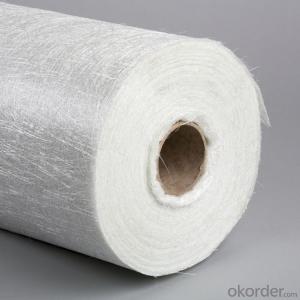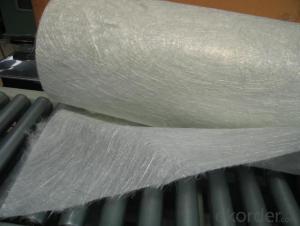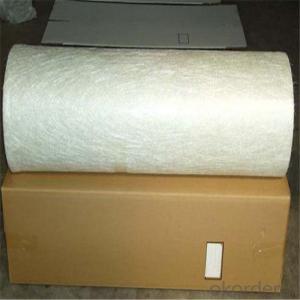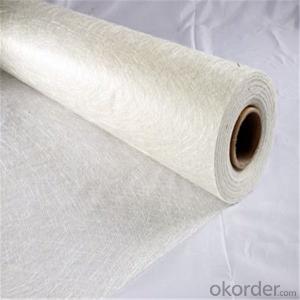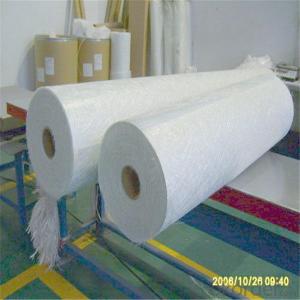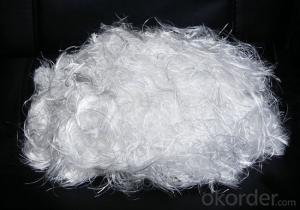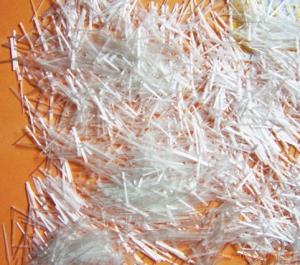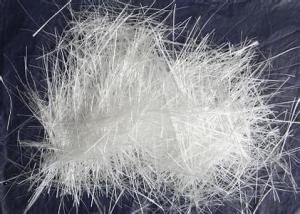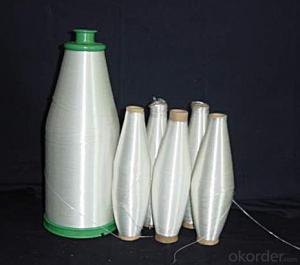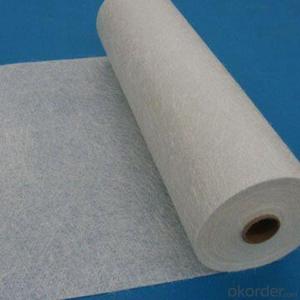100g/m2 Fiberglass Chopped Strand Mat
- Loading Port:
- China main port
- Payment Terms:
- TT OR LC
- Min Order Qty:
- 1 kg
- Supply Capability:
- 5000 kg/month
OKorder Service Pledge
OKorder Financial Service
You Might Also Like
Product Description:
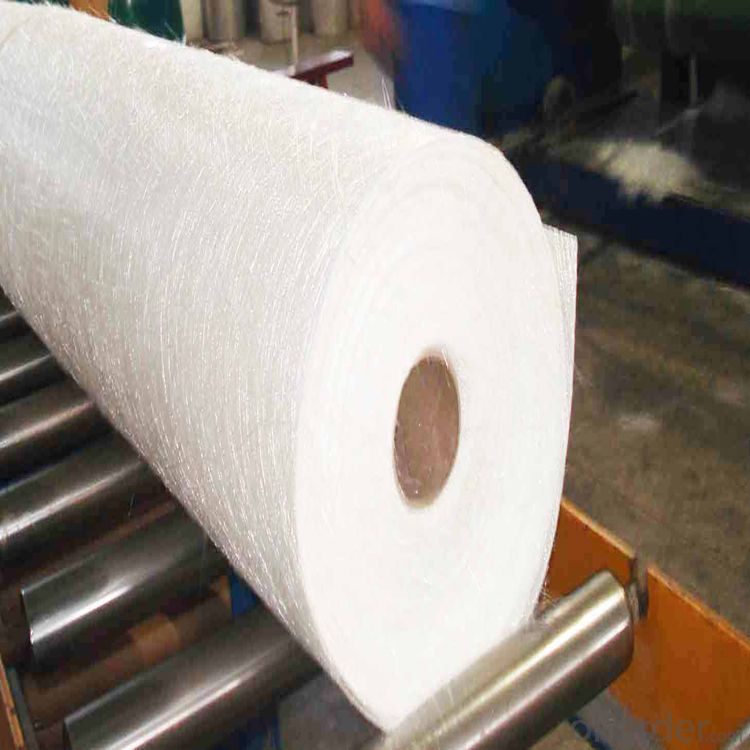
Surfacing Tissue mainly used in the surface layers of FRP products. It features even Fiber distribution, soft feel, level and smooth fiber surface, less glue content, quick resin soak and good pattern fitness. It can improve the product surface property on corrosion resistance, compressive strength, seepage resistance, and longer service life. It is also suitable for spraying; pattern pressing and other FRP pattern technology.
Surfacing Tissue mainly used in the surface layers of FRP products. It features even Fiber distribution, soft feel, level and smooth fiber surface, less glue content, quick resin soak and good pattern fitness. It can improve the product surface property on corrosion resistance, compressive strength, seepage resistance, and longer service life. It is also suitable for spraying; pattern pressing and other FRP pattern technology.
Product Features:
Fast breakdown in styrene
Fiber dispersed evenly
Low binder content
Superior acid corrosion resistance
Specifications:
Item | Over Density | Moisture Content | Chop Density | Polyester Yarn | Width |
(g/m2) | (%) | (g/m2) | (g/m2) | (mm) | |
EMK300 | 309.5 | ≤0.15 | 300 | 9.5 | 50-3300 |
EMK380 | 399 | 380 | 19 | ||
EMK450 | 459.5 | 450 | 9.5 | ||
EMK450 | 469 | 450 | 19 | ||
EMC0020 | 620.9 | 601.9 | 19 | ||
EMC0030 | 909.5 | 900 | 9.5 |
Product Packaging:
Each Surface Tissue is wound onto a paper tube which has an inside diameter of 76mm and the mat roll has a diameter of 330mm. The mat roll is wrapped up with plastic film,and then packed in a cardboard box or wrapped up with kraft paper. The rolls can be vertically or horizontally placed. For transportation, the rolls can be loaded into a cantainer directly or on pallets.
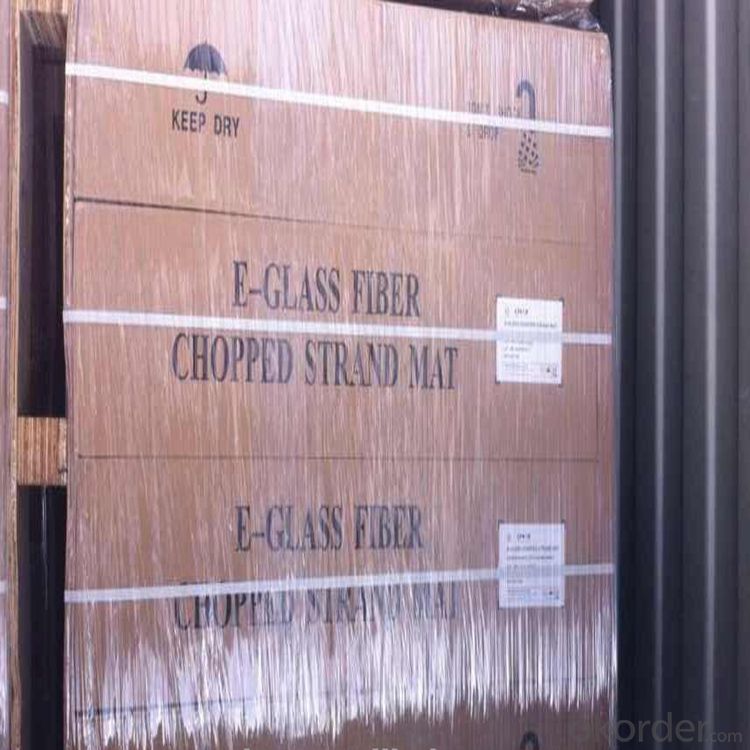
Product Storage:
Unless otherwise specified, Chopped Strand Mat should be stored in a dry, cool and rain-proof area. It is recommended that the room temperature and humidity should be always maintained at 15℃~35℃ and 50%~75% respectively.
Company Information
CNBM (China National Building Material) Group is the largest comprehensive building materials group in China that in integrate scientific research, manufacturing and logistics into one entity. The largest building materials and equipment specialists in China. Upon State Council approval, today CNBM owned more than 300 subordinate manufacturing factories and servicing companies. There are 6 fully owned public listed companies and 11 partially owned with substantial shares public listed companies. In many of these fields, CNBM is playing the leading role in the building industry in the country.

- Q:What are the advantages of using fiberglass chopped strand in the aerospace industry?
- There are several advantages of using fiberglass chopped strand in the aerospace industry. Firstly, fiberglass chopped strand is lightweight, which is crucial in aerospace as it helps to reduce the overall weight of the aircraft, resulting in improved fuel efficiency and increased payload capacity. Additionally, fiberglass chopped strand offers excellent strength-to-weight ratio, making it a suitable material for structural components that need to withstand high levels of stress and load. Moreover, fiberglass chopped strand exhibits exceptional corrosion resistance, ensuring the longevity and durability of aerospace components in harsh environmental conditions. Lastly, fiberglass chopped strand is relatively cost-effective compared to other materials, making it an attractive option for manufacturers in the aerospace industry.
- Q:How does the surface treatment of the chopped strand affect its performance?
- The surface treatment of the chopped strand significantly affects its performance in various applications. The surface treatment is a process that involves applying a chemical coating on the individual glass fibers of the strand. This treatment enhances the adhesion between the glass fibers and the resin matrix in composite materials, such as fiberglass. One of the main benefits of surface treatment is improved interfacial adhesion. The chemical coating promotes a stronger bond between the glass fibers and the resin, leading to enhanced mechanical properties of the composite. This includes increased tensile strength, flexural strength, and impact resistance. The improved adhesion also reduces the likelihood of delamination or fiber pull-out, which can weaken the overall structure. Furthermore, the surface treatment helps prevent moisture absorption. Untreated glass fibers have a hydrophilic nature, meaning they readily absorb water. Moisture absorption can lead to dimensional instability, reduced mechanical properties, and even degradation of the composite over time. The surface treatment creates a hydrophobic barrier that reduces water absorption, ensuring the long-term durability of the composite. Another important aspect influenced by the surface treatment is the strand's compatibility with different resin systems. Different types of resins, such as epoxy, polyester, or vinyl ester, have varying chemical properties. The surface treatment can be tailored to optimize the adhesion between the glass fibers and a specific resin system, maximizing the overall performance of the composite material. In summary, the surface treatment of chopped strands plays a critical role in enhancing the performance of composite materials. It improves interfacial adhesion, reduces moisture absorption, and maximizes compatibility with various resin systems. As a result, the treated chopped strand offers superior mechanical properties, increased durability, and a longer lifespan in applications such as automotive parts, wind turbine blades, construction materials, and many others.
- Q:Can fiberglass chopped strand be used in the production of aerospace structures?
- Yes, fiberglass chopped strand can be used in the production of aerospace structures. Fiberglass chopped strand is a versatile material that offers several benefits for aerospace applications. It has high strength-to-weight ratio, excellent thermal and electrical insulation properties, and good resistance to corrosion and chemicals. In aerospace structures, fiberglass chopped strand can be used in the manufacturing of composite materials, such as fiberglass-reinforced polymers (FRPs) or fiber-reinforced composites. These composites provide enhanced strength and durability while being lightweight, making them ideal for aerospace applications where weight reduction is crucial. Fiberglass chopped strand can be used to reinforce various components in aerospace structures, including fuselage sections, wings, landing gear, interior panels, and engine parts. It can be incorporated into the manufacturing process through techniques such as filament winding, resin transfer molding, or hand lay-up. Furthermore, fiberglass chopped strand can also be customized to meet specific industry requirements, such as flame retardancy, low smoke emission, or high temperature resistance. This makes it suitable for meeting the stringent safety standards and performance criteria set by the aerospace industry. In conclusion, fiberglass chopped strand can be effectively utilized in the production of aerospace structures due to its strength, lightweight properties, and resistance to environmental factors. Its use in composite materials can contribute to the overall performance and efficiency of aerospace components.
- Q:How is fiberglass chopped strand used in the packaging industry?
- Fiberglass chopped strand is commonly used in the packaging industry as a reinforcement material for various packaging components. It is often added to plastic resins or polymers to enhance their strength, durability, and impact resistance. This helps in creating packaging materials that can withstand rough handling, stacking, and transportation without getting damaged. Additionally, fiberglass chopped strand can also be used as a filler material in packaging products to improve their dimensional stability and reduce the overall weight of the packaging.
- Q:What are the abrasion resistance properties of fiberglass chopped strand?
- The exceptional abrasion resistance properties of fiberglass chopped strand are well-known. This is due to its unique composition of glass fibers, which renders it highly resistant to wear and tear caused by friction and rubbing. Furthermore, the high tensile strength of fiberglass chopped strand enables it to withstand abrasive forces without breaking or deteriorating. Because of these qualities, it is widely preferred in industries where abrasion resistance is of utmost importance, such as automotive manufacturing, construction, and marine applications. Moreover, the smooth surface of fiberglass chopped strand reduces friction and minimizes the risk of abrasion, thereby enhancing its overall durability. In conclusion, fiberglass chopped strand is highly esteemed for its exceptional abrasion resistance properties, making it a dependable and long-lasting material for various industrial applications.
- Q:How does the moisture absorption of fiberglass chopped strand affect its performance?
- The moisture absorption of fiberglass chopped strand can significantly affect its performance. Fiberglass is known for its excellent strength and durability properties, making it a popular choice in various industries such as automotive, aerospace, construction, and marine. However, when fiberglass is exposed to moisture, it can undergo a process called hydrolysis, which weakens its structural integrity. Moisture absorption in fiberglass chopped strand occurs when the material comes into contact with water or high humidity environments. As water molecules penetrate the surface of the fiberglass, they react with the resin matrix that holds the strands together. This reaction can cause the resin to break down, leading to a reduction in the material's mechanical properties, such as strength, stiffness, and dimensional stability. The presence of moisture in fiberglass chopped strand can also promote the growth of mold, mildew, and other fungi. These microorganisms can further degrade the material, leading to discoloration, foul odors, and even structural damage. Additionally, the weight gain resulting from moisture absorption can negatively impact the overall weight-to-strength ratio of the fiberglass, making it less efficient in applications where weight reduction is crucial. Furthermore, moisture absorption can alter the thermal and electrical conductivity of fiberglass chopped strand. Water is a good conductor of heat and electricity, so the presence of moisture can increase the thermal and electrical conductivity of the material, which may not be desirable in certain applications. To mitigate the negative effects of moisture absorption, various measures can be taken. One common approach is the use of protective coatings or treatments on the fiberglass surface to create a barrier against water penetration. Additionally, using hydrophobic or moisture-resistant resins during the manufacturing process can help minimize the moisture absorption rate. In conclusion, the moisture absorption of fiberglass chopped strand can have a significant impact on its performance. It can lead to a reduction in mechanical properties, promote the growth of microorganisms, increase weight, and alter thermal and electrical conductivity. Taking appropriate measures to minimize moisture absorption is crucial to ensure the optimal performance and longevity of fiberglass chopped strand in various applications.
- Q:Can fiberglass chopped strand be used in the production of lightweight panels?
- Yes, fiberglass chopped strand can be used in the production of lightweight panels. The chopped strands can be mixed with resin to create a composite material that is strong, lightweight, and durable, making it an excellent choice for manufacturing lightweight panels.
- Q:Can fiberglass chopped strand be used in high temperature applications?
- Typically, high temperature applications do not call for the use of fiberglass chopped strand. Although fiberglass possesses a high melting point, the chopped strand variant lacks the ability to endure extreme temperatures. Chopped strand comprises short, discontinuous fibers that are ill-equipped to endure prolonged exposure to high heat. For situations involving high temperatures, it is more suitable to employ continuous strand fiberglass or other materials that are specially engineered to withstand these conditions.
- Q:How does the UV resistance of fiberglass chopped strand compare to other reinforcing materials?
- Compared to other reinforcing materials, fiberglass chopped strand typically exhibits excellent UV resistance. Its composition, consisting of glass fibers, naturally shields it from ultraviolet (UV) radiation-induced harm. Consequently, fiberglass chopped strand is less prone to deterioration or brittleness when exposed to sunlight for extended periods. In contrast, certain materials like carbon fiber or specific plastics may lack the same level of UV resistance. Carbon fiber, for instance, may degrade and weaken when faced with prolonged UV exposure. Similarly, plastics, depending on their composition, can suffer from UV damage, resulting in discoloration, brittleness, or loss of mechanical properties. Nevertheless, it is crucial to note that the UV resistance of fiberglass chopped strand can vary depending on its formulation and manufacturing process. Some fiberglass products incorporate additional UV stabilizers or coatings to enhance their resilience against sunlight. Therefore, when assessing its UV resistance against other reinforcing materials, it is essential to consider the specific type and quality of fiberglass chopped strand being utilized. Overall, while fiberglass chopped strand generally provides satisfactory UV resistance, it is advisable to consult the manufacturer's specifications and recommendations to ensure its suitability for the intended application and environmental conditions.
- Q:Can fiberglass chopped strand be used in building and construction applications?
- Yes, fiberglass chopped strand can be used in building and construction applications. It is commonly used as a reinforcement material in composites, such as concrete, plaster, and other construction materials, to enhance their strength and durability.
1. Manufacturer Overview |
|
|---|---|
| Location | |
| Year Established | |
| Annual Output Value | |
| Main Markets | |
| Company Certifications | |
2. Manufacturer Certificates |
|
|---|---|
| a) Certification Name | |
| Range | |
| Reference | |
| Validity Period | |
3. Manufacturer Capability |
|
|---|---|
| a)Trade Capacity | |
| Nearest Port | |
| Export Percentage | |
| No.of Employees in Trade Department | |
| Language Spoken: | |
| b)Factory Information | |
| Factory Size: | |
| No. of Production Lines | |
| Contract Manufacturing | |
| Product Price Range | |
Send your message to us
100g/m2 Fiberglass Chopped Strand Mat
- Loading Port:
- China main port
- Payment Terms:
- TT OR LC
- Min Order Qty:
- 1 kg
- Supply Capability:
- 5000 kg/month
OKorder Service Pledge
OKorder Financial Service
Similar products
New products
Hot products
Hot Searches
Related keywords
